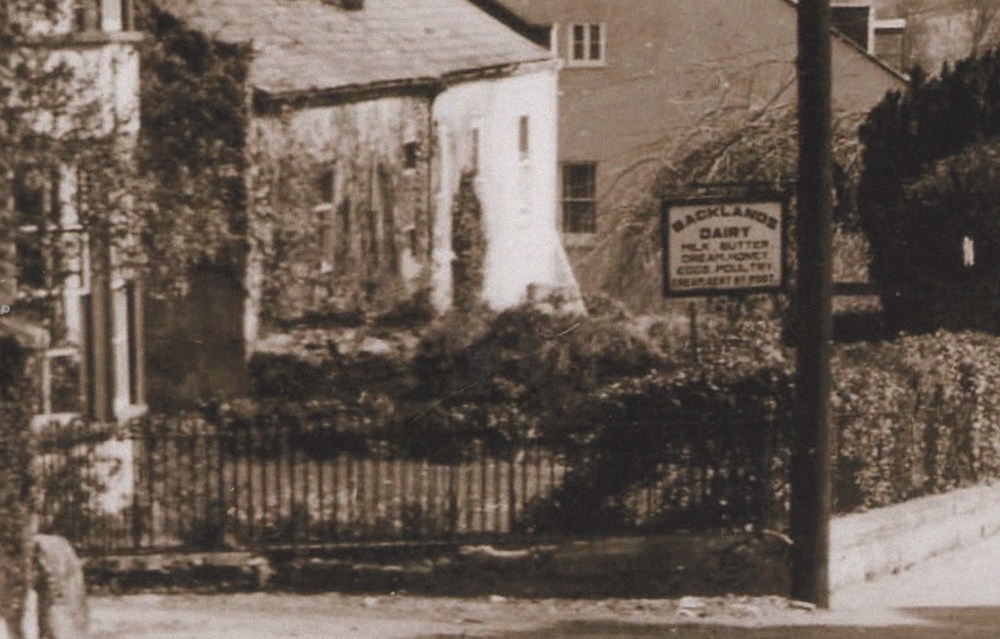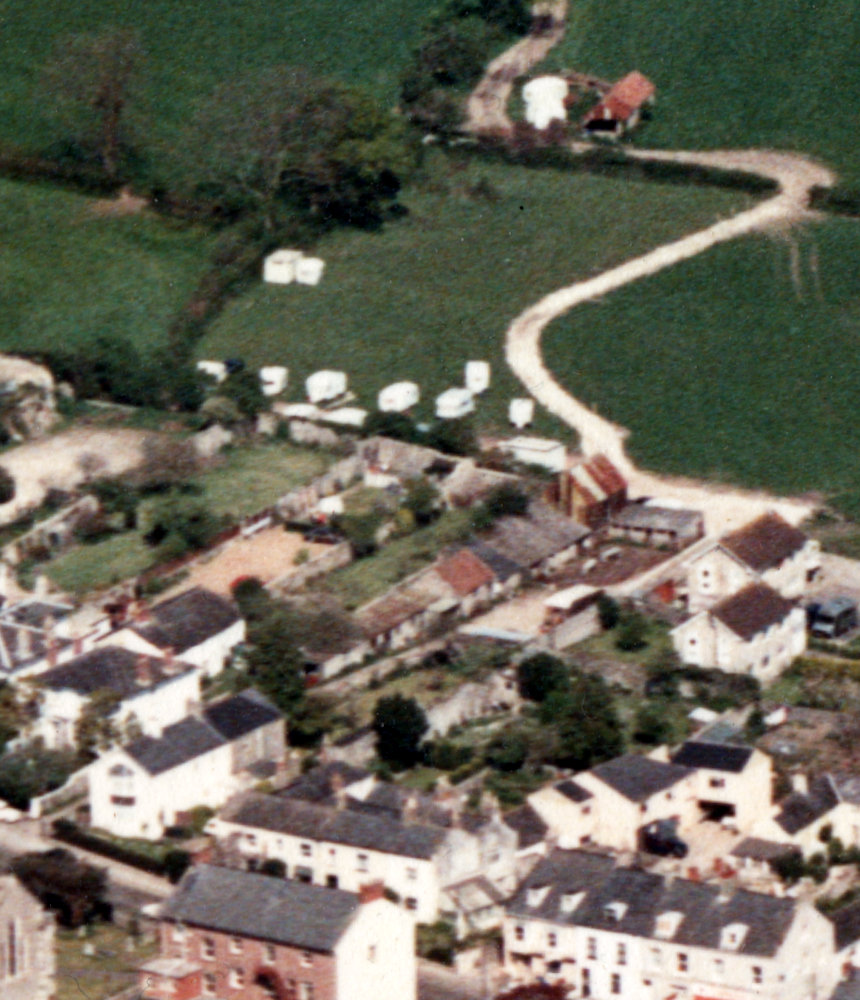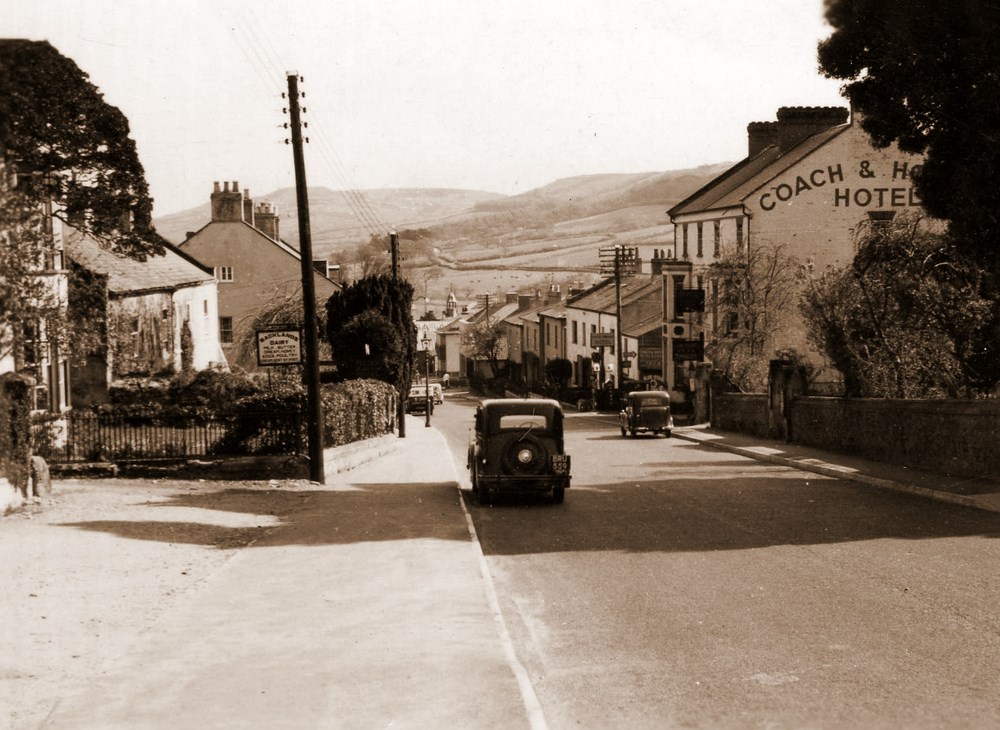Click on images or Charmouth Home to return back.

Backands Farm originally formed part of a much larger holding which over the centuries was subdivided into smaller units. These included Newlands, Lilly, Yandover, Foxley, Mill and Wood Farms. I would seem that from at least 1170, when Richard del Estre gave land to the Monks of Forde Abbey who built a Grange further inland from the coast. The turning point arrived between 1290 and 1297 when William, the Abbot wanted to improve the Manor and create a Free Borough. This was based along the Street, which even today has the vestages of this with its long Stone boundary wall to the north and long burgage plots stretching towards it.The borough which is so well described in The Cartulary still held at Forde Abbey, was never very successful, with its competition from nearby Lyme Regis and Bridport. In time the original plots were amalgamated into large more viable holdings. A survey of 1564 shows most families renting an acre behind the property on The Street and a further acre of common land in the fields between it and the coast. The building that was eventually to be The Manor House may well be the site of the original Grange. For its position is central to the village being opposite the new built Church, crossroads and Market. A clue to this is in Sir William Petre's Survey which details villagers and their properties. Amongst these is Joan Borcombe, widow of Richard Borcombe with lands called Le Grange (32 acres) lying in several closes or parcels viz, Le Grange Pasture (5acres), 2 called Nythbarres Pasture(6 acres), Le Park Pasture (12acres), Park Mead (3acres) Chelcroft Meadow (2acres), Burrye Moor Meadow (3acres) and field Mead (1 acre). A later survey in 1841 shows Horse Close or Berrymore Court Field, Little Park and Great Park behind the garden of the Manor House.
After the reformation of 1539 when the Forde Abbey Estate was broken up, Charmouth initially reverted to the Crown but was later bought by Sir William Petre and later his son Sir John Petre who sold most of The Village to William Pole of Shute Barton, near Axminster in 1564. They in turn sold Charmouth Manor and its lands to William Ellesdon in 1648, although they kept The Mill estate until selling it in 1780. The Ellesdons were to live in the village at The Manor House and Anthony was to live a long life here as recorded in the fine marble memorial to him in St.Andrews Church today. He outlived his family and his estate when to his sister’s son Richard Henvill, who was a Bristol Merchant who also owned Catherston but never lived here. By 1783 The Manor of Charmouth was owned by Richard Phipps Henvill of St. Kitts in the West Indies. It was he that initiated a comprehensive survey of the village in that year. Sadly, the Map has been lost but record book has survived and describes in detail properties and their owners at that time. The Fields and their acreages are shown that at that time formed the Manor. Newlands, Lilly, Yandover, Foxley, Mill and Wood Farms are also shown with their respective owners at that time. The farms had been unaltered for centuries, but in 1788 there was to be a dramatic change when the Manor Lands were bought by Lieutenant James Warden whose wife was the sister of John Puddicombe, who owned Woods Farm in the village. But before the year was out he sold all the lands to the north of The Street to village curate, Brain Coombe. These became known as " Backlands Farm" and those he retained as "Sealands" he also sold the Manor House and its Garden and built himself a fine Mansion at Langmoor on his estate.
Backlands Farm retained the buildings at the side of The Manor House and a small cottage was lived in by John Bowdridge and his family who rented this Farm and other fields in the village. It consisted of just 10 Fields now with a total area of just over 40 acres.
Charmouth is fortunate to have retained its Land Tax and Poor Rates records in the Archives at Dorchester, which provide valuable information regarding the Farm. john Harris took on the lease of the farm in 1814 and continued after the death of his landlord, Rev. Brian Coombe in 1818. Brian never married and his large estate which also included Stonebarrow Farm, Pear Close and other properties in the village was left to his five nieces - Frances Warren, Frances Purlement, Catherine Purlewent, Jane Purlewent and Mary Purlewent. The tax records describe the trustees as “Warren and Purlewent” and the farm as “Back Grounds” or “Combes”. In 1832, the Farm is subdivided again when Sir John Bayley, who had been Mayor of Lyme Regis having 17 acres and Captain Philip Schalch has 23 acres. Philip is related to the trustees and his sister, Mary Stuart, later builds "The Court" nearby. He lets the Farm to James Powell, who has lived in the village since 1812.
James Powell becomes embroiled in the misdeeds of the 1841 Election for an M.P. for Lyme Regis. In that year Charmouth is included in the Voting. But there are suspicions of bad practices and a Commission is set up at Westminster to look into it. The record of this can be read in Volume 6 of "Reports of cases of controverted elections in the fourteenth parliament". A lime kiln at Charmouth was used to secure a vote in one of the Lyme Regis Constituency’s famously disputed Parliamentary elections. The investigating Parliamentary Select Committee had to have it explained to them what a lime kiln was. On learning that it was open to the sky and uninhabitable they ruled that it did not qualify as a house worth the required sum and therefore should not have enfranchised its owner or person falsely claiming to occupy it. The surveyor who assessed the value of the property had been bribed to value the kiln as if it were a house worth more than the threshold value for enfranchisement. The vote was struck off, as was a similar vote “enfranchised” by ownership of a pig sty by James Powell, but these were not then criminal actions, so no prosecutions were launched.Pinney was initially declared re-elected at the general election of 1841, but on petition his election was declared void and Hussey declared elected in his place after scrutiny of the votes. It is an astonishing snapshot of the village in that year with many of its citizens standing in the dock. It was all recorded in detail, especially the case against James Powell, with a number of villagers describing the Farm and how it was run. The book contains a plan which is included here showing Barns, Piggery, Stable and Slaughterhouse. On the corner to The Street was once a Butchers Shop, which has long since gone. James and his family lived in a long narrow building against the east wall, which is today called "Backlands Cottage".
The Tithe Map of 1841 for Charmouth is important and fairly accurate as it shows the buildings and fields behind them with their sizes. Set back are two large barns which are described as a Barton which are shared by both Bayley and Schalch. In this year, Powell sublets part of the farm to John Miller who lives there and whose name appears in the Census for the same year. The lease is then briefly taken in by John Hodges, a butcher who later buys Beech House on the other side of the Street and becomes very successful in the village. The next Census for 1851 had Charles White, aged 35 and his family renting the Farm from Philip Schalch. He is described as a Dairyman and from then on it is referred to as a Dairy Farm. The 1861 Census has William Barnes and James Barrett living and working there as Dairy Men.
It is Mary Stuart who pays £2350 for her brother’s farm in 1870. She is extremely wealthy and also purchases Stonebarrow Farm and East Cliff and other fields in the village. But just two years later she dies aged 72 and her Estate goes to her unmarried daughter, Catherine who retains it until her death in 1891.It was during her ownership that the substantial house at the front was built and now consists of two parts- “Harding” and “Backlands Farmhouse”. It is where William Norris and his family would live for nearly 30 years. The 1881 Census details him as aged 47 there with his wife, Elizabeth, aged 34 who is described as a Dairy Woman. He is farming 70 acres, which must include another Farm.
On Catherine Stuart's death, the Farm passes down through various members of the Schalch family until it was sold on the death of Annie Verner Schalch in 1932. It was bought by Frederick Jolliffe who had the Dairy there until he sold it to Reginald and Rita Forsey in 1934. I have Ron and Jean Dampier to thank for the information on the confusion that arose when I studied the Electoral Rolls for the Forsey's. For in the 1960s there were in fact two Backlands Dairies run by two separate Forsey Families, who were not directly related, a short distance from each other. The rival Dairy was opened up at no.2 Manor House by William George and Gladys Forsey and an advert is shown here. They had the milk delivered and would sell it from the front door and it was stocked in large fridges at the rear of the premises. It was Reginald and Rita who operated the Dairy Farm from their farm house further up the hill. Ron and Jean told me they lived in the large House and they would go through their garden to a lower building, which would have once been the original farmhouse, where the milk was chilled and kept for sale.. Often cutomers would take their own containers rather than milk bottles. An advertising board at their entrance shows them selling Milk Butter, Cream, Honey, Eggs and Poultry from their premises. Behind the house was a long row of Cow sheds where the Jersey Herd was kept. They grazed on the fields at the rear of the sheds and Barn. In the early 1970s Reg Forsey shared the Farm with John and Joyce White and split the house, wth Reg & Rita Forsey living at the front in "Harding" and the Whites in the rear in "Backlands Farmhouse". It was the Whites who took the Farm on when Reg died in 1978 after over 40 years as a farmer there. In time the Dairy was closed & Mr & Mrs White moved to Catherston Dairy Farm. Later 2 new houses were built at the rear of the property.
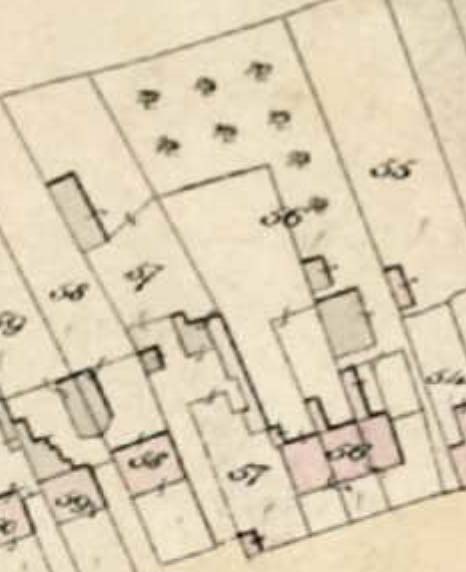
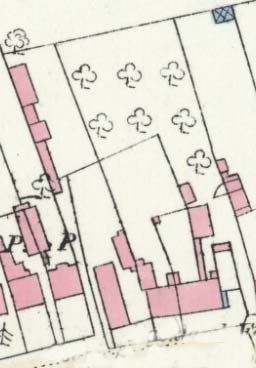
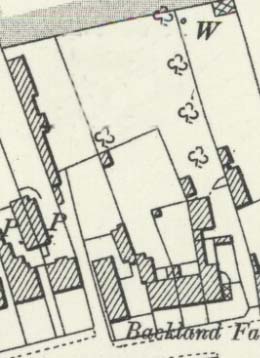
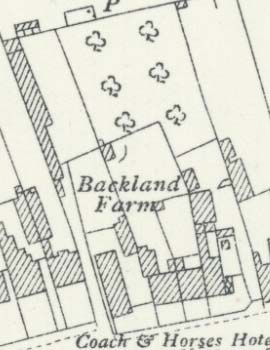
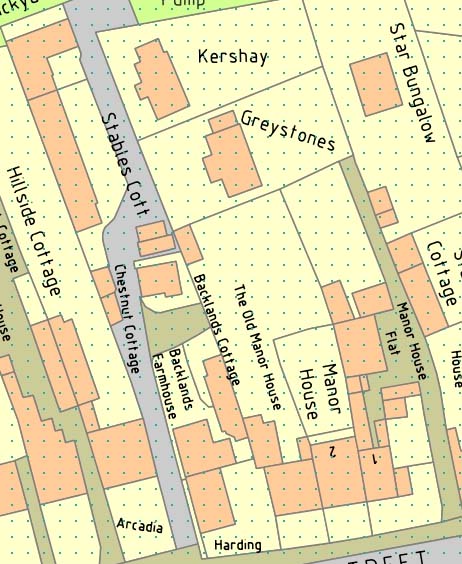
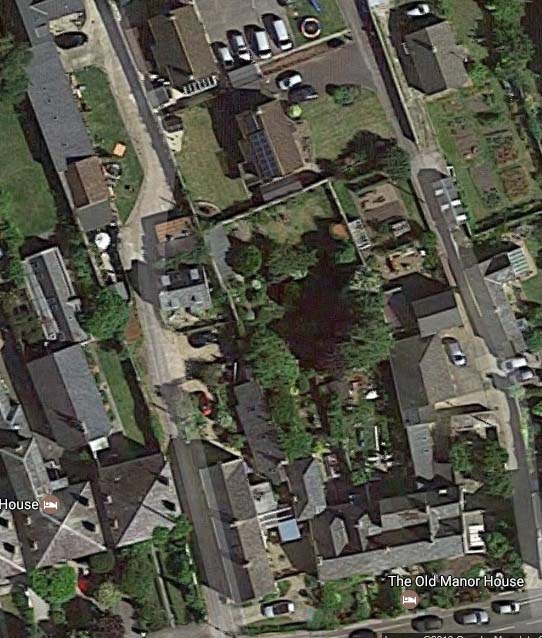

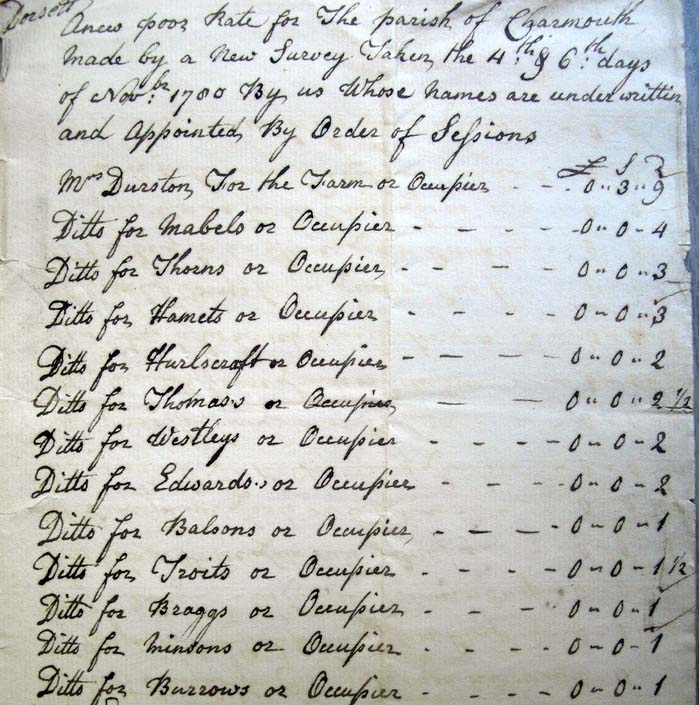


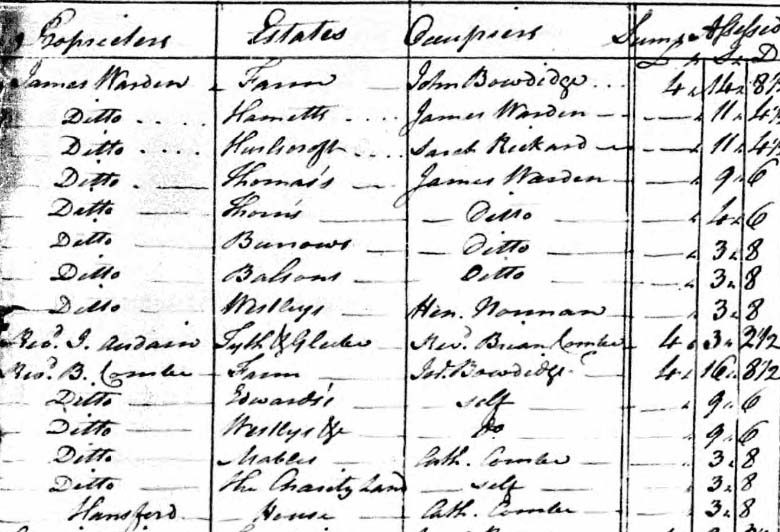
All that Backside or yard containing 29 perches and also that close of arable land Little Park Containing 3 acres 3roods and 14 perches and also all that close or meadow or pasture land called Dry Mead containing. 4 acres 3 roods 3 perches and also that close or meadow or pasture ground called Higher Grange or Grange Mead containing 5 acres 1 rood 3 perches and all that orchard called Grange Orchard containing 3 roods 34 perches which said Barton or yard and several closes called Little park, Dry Close, Higher Grange Mead and he orchard called Grange Orchard are also situate in Charmouth and now in the occupation of John Harris as tenant the year 1788 purchased with other lands by the said Brian Combe, Clerk, deceased of the said James warden and also that meadow or pasture ground called Berry Moor with the plantation thereto belonging containing 3acres 3 roods 20 perches also situate in Charmouth aforesaid now in the occupation of the Reverend Thomas Hodges at tenant thereof were also lately purchased by the said Brian Coombe, Clerk of the said James Warden for and also all the Tenement or Farm with the .. of Arable Meadow and pasture land thereunto belonging called Stone Barrow farm with the timber now growing containing thereon one hundred and forty one acres and thirty four perches situate lying and being in Stanton St. Gabriel within the parish of Whitchurch Canonicorum in the county of Dorset now in the occupation of the said John Harris as tenant thereof and was lately purchased in fee.
Several closes called Little Park and By Mead in the occupation n of the said John Harris and the said close called Berry Moore in the occupation of the said Thomas Hodges all situated in Charmouth



21 - Brans Orchard 22- Brans Mead (5-3-39), 23 - Little Park (3-3-12), 24 - Dry Mead(4-2-1), 25- Horse Close (3-1-33)
Phillip Shalch owned the following which James Powell farmed:
26 -Barton, 27-Elm Close (6-2-16), 28-Pit Mead (3-3-21),29- Lower Mead (3-3-4),30- Great Park (7-3-16)
James Powell rented no. 57 from Philip Shalch and is described as a House, Barton and Garden (1 acre 28 perches) on the Tithe Map of 1841.

Butchers Shopit might be three ; it has not been built above four years. shop ?-T-The shutters have always been shut.






Backlands Farm no 21 Grange Orchard, 22 Grange Mead, 23 Little Mead, 24 Dry Mead, 25 Berrymore or Horse Close, 26 Barton Orchard,27 Oak Meadow or Elm Close. 28 Pit Mead, 29 Square Close or Lower Mead, 30 Great Park, 57 Dairy House & Homestead. Acreage 41 acres 3roods 14 perches. Mrs Stuart purchased Backlands Farm in 1870 from John Spurway of Milverton , Somerset and remainder in 1874.









